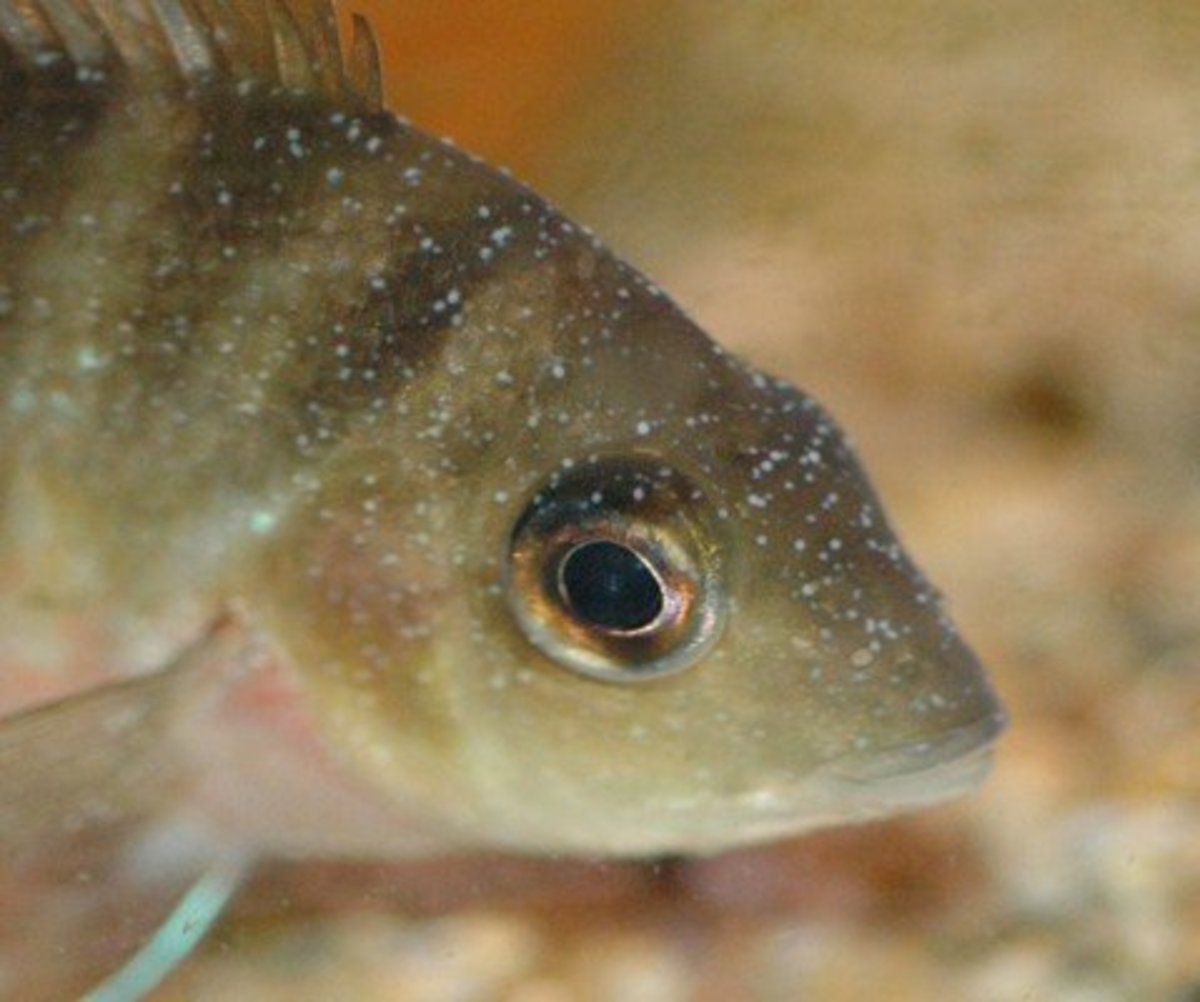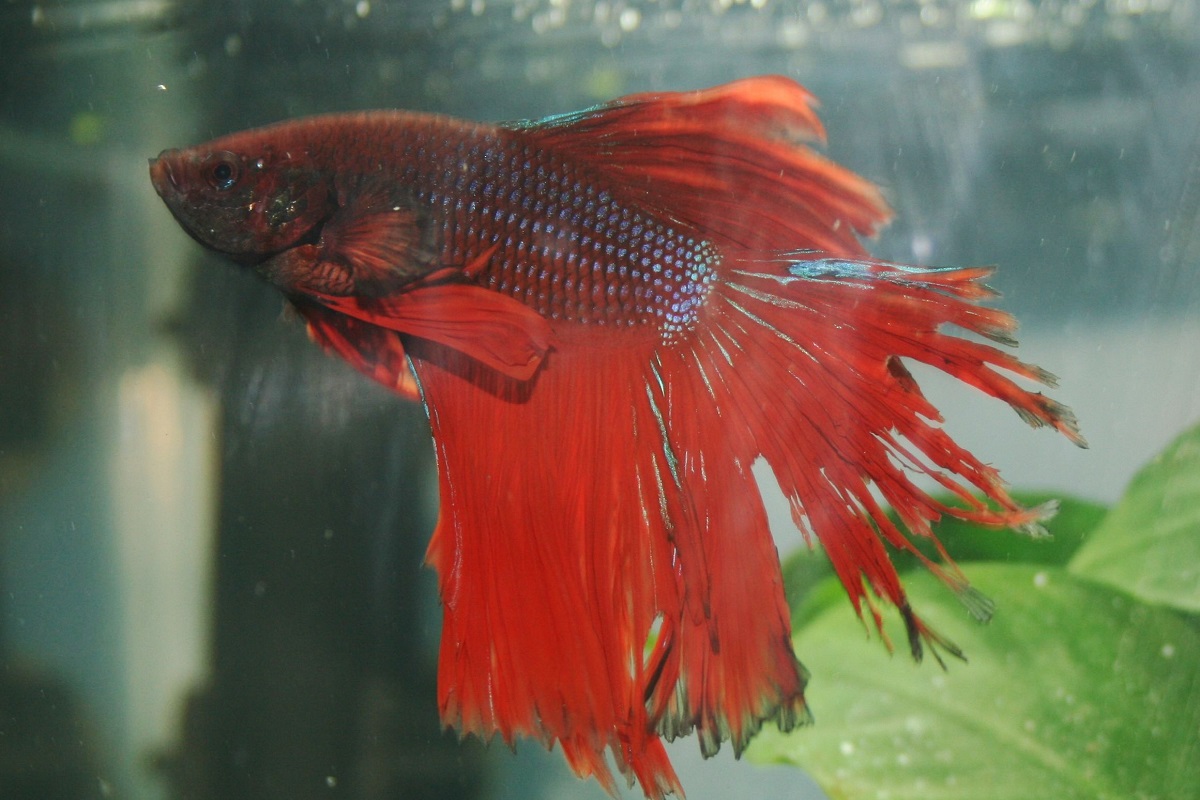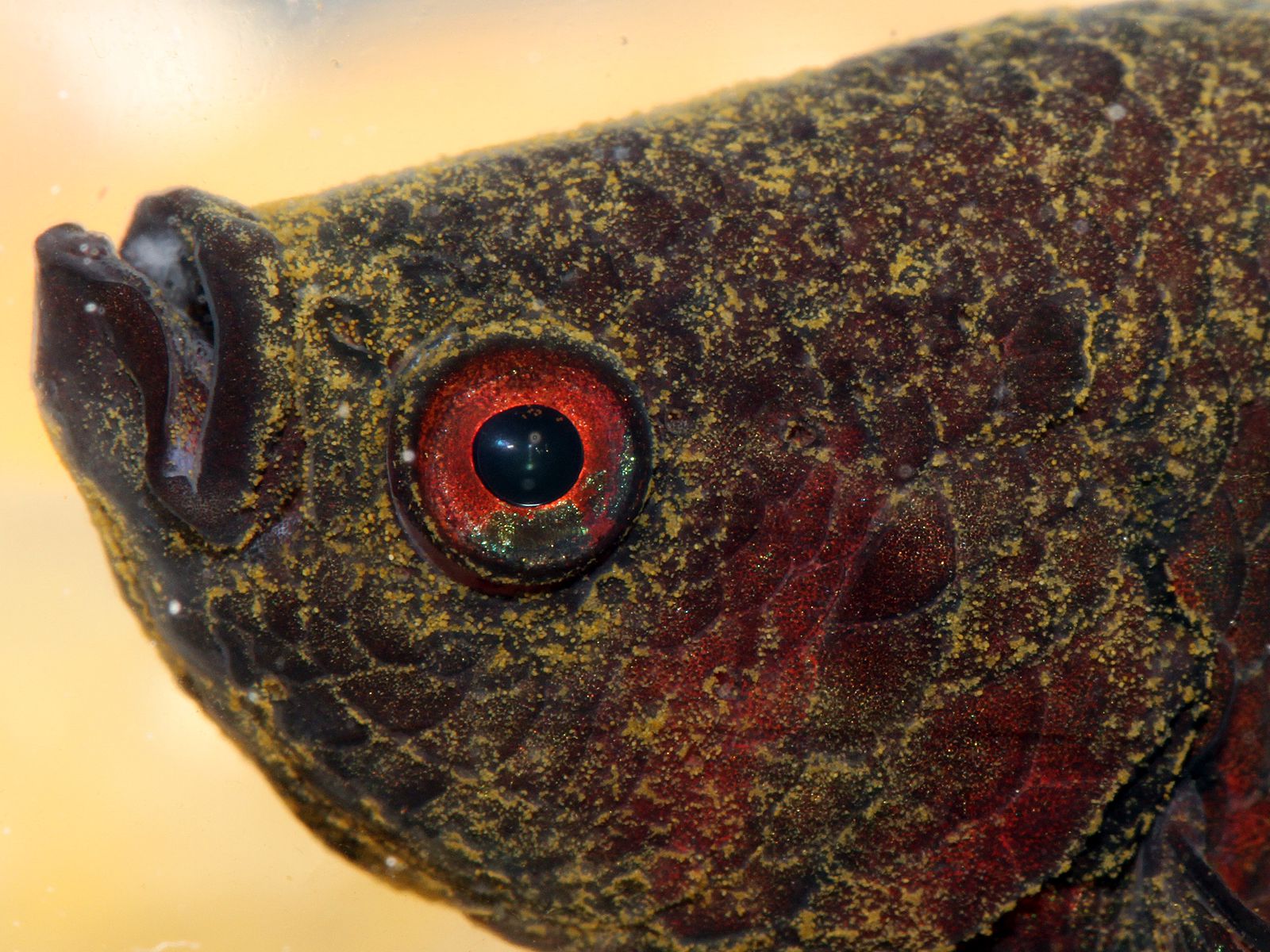White Spot (Ichthyophthirius Multifiliis), one of the most common parasitic diseases in aquarium fish, is a dangerous disease that can have fatal consequences for every fish.
What is White Spot (ICH) Disease?
Unlike other parasites, it has a complex life stage, so its treatment involves a combination of different treatment methods. Because it is a visible type of parasite, it is easy to diagnose. They can be seen as white spots, about half a millimeter in diameter. It is mostly seen in the fin, tail, gill and head parts of the fish and in time it spreads to the whole body. All the white patches seen on the skin may not be Ich parasites and can have this disease when white patches are not visible on the skin. In this case, the parasites settle under the fish’s gills.
How Does White Spot (ICH) Disease Occur?
The Ich parasite can be transported by fish and equipment placed outside in the aquarium, or it can also form in the water. Normally, these parasites are also found in every environment where fish are present. The reason why the fish are not always attacked by these parasites is that they have an immune system against these parasites. As soon as their immune system starts to weaken, these parasites stick to the skin of the fish. The main factors that weaken the immune system of fish are as follows:
- Low water quality
- Sudden temperature changes
- Small aquarium
- Overload aquarium
- Keeping incompatible species together (Keeping fish that may attack, injure, or disagree with each other together.)
- Unbalanced, malnutrition.
All these situations will cause the fish to be stressed and sick, thus weakening the immune system.
How Does White Spot (ICH) Disease Develop?
After Ich parasites attach to the skin of the fish, they settle under the skin in about 8 hours, depending on the water temperature. The fish feel mild pain and itching like a mosquito bite at this time. It feeds on dead subcutaneous cells and body fluids of fish under the skin. When it completes its development, it leaves the body of the fish and either fall to the bottom or clings to a fixed object in the water. Within 10 hours, it divides and reproduces at the place where it is attached and begins to search for new fish bodies where it can grow.
The completion of the parasite’s life cycle depends entirely on the water temperature. For example, this process takes one week at 25 °C (77°F), four weeks at 16 °C (61°F), and four days at 30 °C (86 °F).
What is the Effect of White Spot Disease (ICH) on Fish?
The parasite spends 95% of its life cycle by feeding in the body of the fish. During this time, it feeds on the body fluids of the fish and causes the fish to become weak and weak in a short time. In addition, due to the lack of appetite that occurs in fish at this stage, the fish cannot regenerate the energy it has lost and it becomes weaker with each passing hour and the fish will die if the parasite has not yet completed its development. The parasite leaves the body of the dying fish within a few hours.
Another effect is that it causes a strong itching and mild pain and burning sensation in the fish. Under these effects, they try to relieve itching by constantly rubbing against something hard. By the way, it damages its very sensitive skin.
What are the Symptoms of White Spot Disease (ICH)?
White spots around half a millimeter in diameter are seen on the body. Continuous discomfort, itching, friction desire and loss of appetite, weakness, weakness, and desire to hide are observed in fish.
How Is White Spot Disease (ICH) Treated?
No drug treatment will yield any results since the parasite penetrates under the skin. The parasite is not affected by any external situation under the skin. In order to apply the treatment, it is necessary to first remove the parasite from the body of the fish. The only way to do this is to wait for the parasite to complete its development and leave the body.
The parasite completes its development depending on the water temperature. In this case, increasing the water temperature gradually will allow the parasite to complete its development earlier and leave the fish as soon as possible. At this point, the issue to be considered is to know in what temperature range the fish can live according to its breed and not to increase the temperature above the upper level. Otherwise, the fish may die due to the water temperature. In many cases of white spots, fish die not due to parasites but as a result of the unconscious practices of aquarists.
Fish are harmed as a result of many wrong practices such as increasing the temperature too much, using unnecessary drugs during the development period of the parasite. Parasites must first be removed from the body and then killed with the help of medication.
The path to follow is as follows in summary:
- If you can detect the factor causing the interference, eliminate that negativity immediately.
- When the white spot is noticed, the first thing you need to think about is that you cannot interfere with the parasite on the fish. At this stage, the use of any medication, salt, etc. will not provide any benefit in curing the disease, and will cause many harm to your pet. In particular, avoid practices that can lead to the death, such as salt baths. Gradually bring the temperature to a level close to the upper limit the fish can live, by 1 °C (2°F) each day. Observe every day. Day after day the spots will decrease and gradually disappear. Itching and rubbing movements will decrease.
- When there are no spots left on the fish, start bringing the temperature back to the previous level gradually (1 °C (2°F) per day).
- In the meantime, siphon the bottom without wasting time. Siphon the entire bottom of the aquarium. But do not absorb more than 20% – 30% water at this level. Instead of missing water, add rested water of the same temperature. Add an appropriate amount of Methylene Blue to the capacity of your aquarium. You can also add rock salt at this stage, but you should consider the type of fish you feed and the live plants in your aquarium. Some fish and live plant species are sensitive to salt and can get sick and die.
- After 12 hours, apply a comprehensive bottom siphon to your aquarium. Repeat until you are sure you have siphoned the whole bottom. Instead of missing water, add rested water at the same temperature. You can use Methylene Blue again at this stage, but be very careful with the amount. You can add a small amount.
- Start feeding in the proper amount and healthy.
How to Prevent White Spot Disease(ICH)?
The most effective way to prevent the White Spot (ICH) is to keep your pet healthy at all times. In this way, the immune system will remain strong and the parasite will not be able to settle in your pet.
Protection against parasites entering from outside is to quarantine your newly purchased pet or accessory before placing it in your tank for a week. After you are sure that there is no white spot on the newly purchased pet, you can take it to your main tank.
Conclusion
Although it is a deadly disease, it is definitely not a disease to be feared. The treatment of the disease is very easy if the above mentioned are fully understood and applied. There is unproven information that once caught white spot disease and can overcome this disease, the rate of catching this disease again decreases, that is, the fish has developed an extra immune system against this parasite. It is known that there are fish caught with this disease more than once. Although most aquarists disagree with the idea that the rate of a recapture of the fish that survives the disease will decrease, the idea that it survives the disease more easily when caught for the second time is generally accepted. In other words, the symptoms of weakness, hiding, loss of appetite in the first catch are not observed much in the second. Fish go through the disease stage by being more lively, more appetizing, and more active than the first disease.




